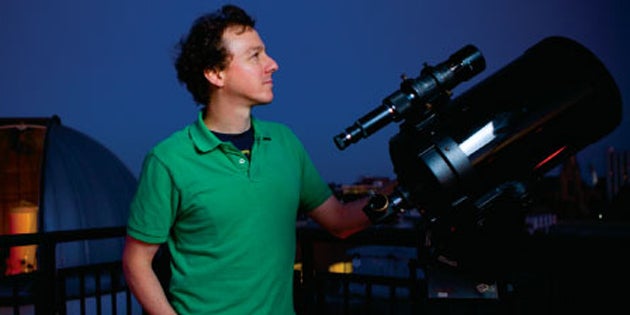Though astronomers have discovered thousands of planets orbiting other stars, major uncertainties still exist about how planets are born.
Thanks to research from College of Charleston professor Joe Carson that’s been published in the October 2015 issue of the prestigious journal Nature, new revelations have been made about the tempestuous and fierce environments from which planets may sometimes form.
Carson is one of a handful of astronomers that have discovered never-before-seen structures within a dusty disc surrounding a nearby star. The fast-moving, wave-like features in the disc of the star AU Microscopii are unlike anything ever observed before.
Carson was a member of two different groups investigating the star/disc system. One group carried out the infrared observations with the European Southern Observatory’s Very Large Telescope, while the other group used the Hubble Space Telescope to observe the disk in optical light. The two groups combined their data and discovered the fast-moving nature of the disc.
Whatever the wave-like features are, these ripples are moving at speeds up to 25,000 miles per hour — fast enough to escape the star’s gravitational pull. The ripples are so mysterious that it’s not yet known if they are somehow associated with planet formation, though Carson’s group suspects that the ripples may be instigated by huge and sudden bursts of energy released by the central star.
“The next step is to understand the origins of the fast-moving features, and also how they might potentially be interacting with infant planets in the system,” says Carson. “Additional insights are needed both observationally as well as from theoretical modeling.”
He says that he is currently working with College of Charleston students on improving the image processing techniques, in order to enhance the effective sensitivity to high-resolution features that were previously undetected.
This is not the first time Carson has been recognized for his stellar research. In 2009, he and other researchers achieved the rare feat of directly imaging a “planet-like object” more than 50 light years away. About three years later, he and students Laura Stevens and Thea Kozakis discovered another exo-planet, which they named Derek, which is 170 light years away.
Learn more about the College’s Department of Physics and Astronomy.





